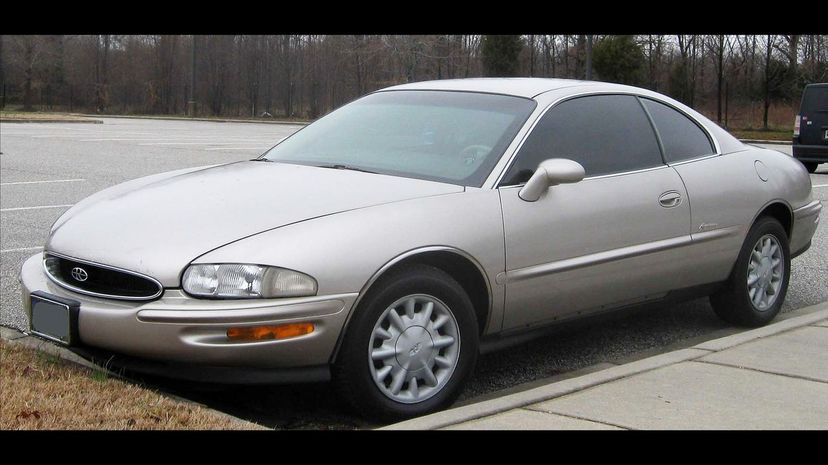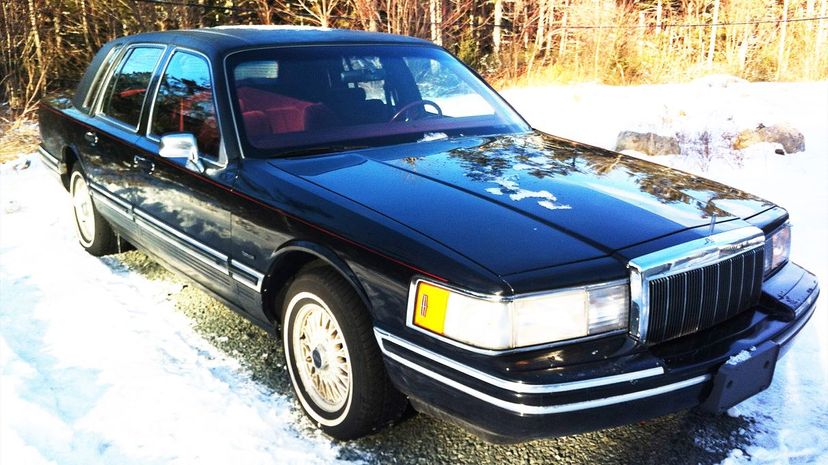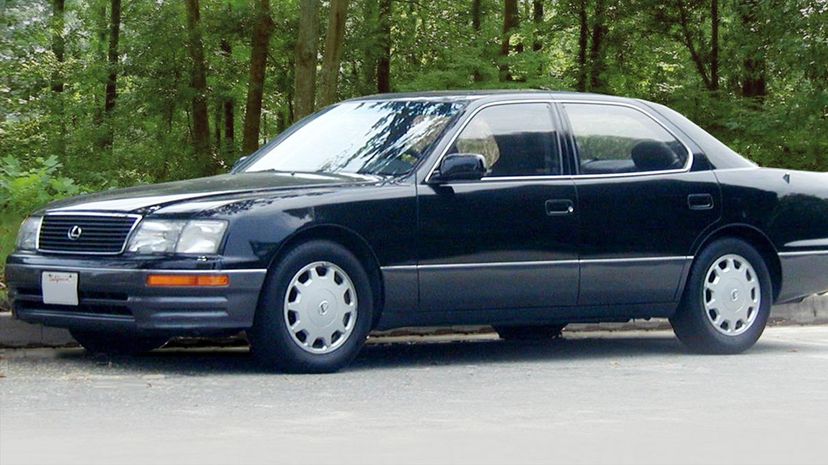
About This Quiz
Demonstrate your knowledge of cool cars from the 1990s. You must really know your autos if you can guess car makers and their models from this totally radical decade!
In the '90s, automakers produced cars for many reasons: Consumers' needs were as diverse as the auto pricetags they could afford. There were compact cars that started to veer into the mid-sized lane because of all the features engineers attempted to cram into starter vehicles. When the inside technology surpassed a vehicle's outer appearance, customers tended to shrug off innovation and opted for a more attractive price tag. Companies like Honda slashed several hundred dollars from base prices when competitors managed to pull off reasonable car features for less.Â
When producing unique design strategies came to a standstill, Mazda unabashedly borrowed design and engineering ideas from pricey car concepts that had worked in the past. As a result, the company downscaled production costs just enough to attract a large consumer base. Such was the case for the successful Miata model, which borrowed from the classic Lotus Elan. The Miata's market performance spurred the Lotus company to remind the world of the original by releasing its '90s remake of the classic.
Scroll down memory lane and tag as many cool car names as you see!

Porsche aimed for a low-weight performance auto when it crafted the Boxster. The car conjured '50s/'60s Porsche race-car design, and it was outfitted with a mid-engine, another classic Porsche attribute.

The mid-engine 1990 Lamborghini Diablo was outfitted with a 5.7-liter aluminum V-12 engine that produced 485 horsepower. The car's suspension system included telescopic shock absorbers.

During the 1993 model year, Mercedes-Benz unleashed three two-passenger SL varieties. The 500 SL included a 5.0-liter V-8 engine that produced 315 horsepower. The 600 SL's 6.0-liter V-12 generated 389 horsepower, and a 3.0-liter 228-horsepower V6 charged the 300 SL.
Advertisement

The Toyota Supra was a preferred sporty roadster in the '90s. Sizable contoured control buttons and a spacious front interior betrayed the vehicle's unexpected luxury qualifications.

The Dodge Viper GTS accelerated from zero to 60 mph in 4.4 seconds. The two-seater was outfitted with power-assist steering, rear-drive and a front V-10 engine that could achieve 400 horsepower.

German automaker Mercedes-Benz crafted its '90s E-Class headlights with a double reflector that focused low and high light beams. Light technology included optional Xenon-gas outfits that would automatically prevent light beams from blinding oncoming drivers.
Advertisement

To celebrate its 90th anniversary, Buick introduced the 1992 LeSabre. The car was also a response to Oldsmobile's 88 model. The LeSabre was the top-selling full-size car of 1992.

Volkswagen revived the 1938 Beetle classic with a brand-new version in 1997 that became an instant favorite. The Volkswagen New Beetle was the first of several new models the company sold in North America in the '90s.

Buick combined a practical and attractive design with power when the company engineered the 1998 Regal.
Advertisement

The 1993 Acura Legend Coupe featured a 3.2-liter V-6 engine that generated 230 horsepower, a six-speed manual transmission and a traction control system. Acura propped the LS edition on 16-inch wheels.

Before the 1992 Audi 100 CS Quattro, Audi only offered a five-speed model with a V-8 engine. The '92 Quattro accommodated a V-6 engine and optional automatic transmission. The Quattro's base price was $36,400.

The structurally-upgraded 3,211-pound 1999 Ford Mustang Convertible was priced at $23,070, and included anti-lock brakes and traction control. The 3.8 V-6 engine offered 190 horsepower.
Advertisement

With the 1995 Riviera, Buick achieved a cool elegant design decked with retro accents, and it was loaded with modern features like warm-up seats and cruise control. The Riviera's V-6 engine cranked 205 horsepower.

The Honda Civic was an economy car of choice in the '90s. The 1999 LX offered versatile brake features like power-assisted drum brakes and optional anti-lock brakes. What's more, the EX offered 21 more horsepower than the LX.

Honda reduced the price of the 1998 Accord by $950 and increased the cabin size. The four-cylinder LX was priced lower than $20,000. DX models delivered 135 horsepower, while LX and EX models produced 150 horsepower.
Advertisement

Land Rover's 1997 V-8-powered Discovery boasted a surround-sound system and a six-disc CD auto-changer. Land Rover North America, Inc. broke numerous sales records in the '90s. In 1997, the company sold 23,826 cars, a 2.8% increase from the sales total in 1996.

Ford discontinued the Thunderbird in 1997. The car was introduced in 1955 to vie with the Chevrolet Corvette. In 1999, Ford re-introduced the Thunderbird as a concept car that featured retro accents, such as rounded headlights.

The Lincoln Town Car was the essence of full-bodied style in the 1990s. The three versions of the 1990 Town Car were Standard, Signature Series (shown here) and Cartier, which offered top-of-the-line luxury.
Advertisement

Ford revamped the Taurus design in 1996. The company scaled down the trunk and increased the interior by 17%. The frame was also two inches wider and five inches longer than previous editions.

The Ferrari F50 design was based on the 4.7-liter 60-valve V-12 engine's construction. The 2,712-pound 1996 F50 produced 520 horsepower and could zoom from zero to 60 in 3.7 seconds.

The 626 was Mazda's best-selling '90s car in the United States. The mid-sized 1998 sedan's front was fitted with an attractive chrome-trimmed grille.
Advertisement

Chevrolet's Corvette ZR-1 zoomed from zero to 60 mph in 4.9 seconds. The two-door/two-passenger performance vehicle featured a six-speed manual transmission and cast-aluminum wheels.

Aston Martin set out to sell 250 of the DB7s in the United States for the 1996 model year. The '96 coupe was priced at $125,000, and the convertible sold for $135,000. The DB7 interior included a wooden dashboard and leather seats, both custom-made.

The 1998 Talon was the only Eagle manufactured that year. When it was introduced, the attractive sports coupe was marketed to young consumers. The Eagle received a Ferrari-like design upgrade in 1995.
Advertisement

Audi fitted the 1991 200 Quattro model with a 20-valve, five-cylinder turbo engine and four-wheel drive. The 2.2-liter engine achieved 217 horsepower and propelled the car from zero to 60 miles per hour in 6.5 seconds.

When Ford released the three-door Probe, the auto drew comparisons to Mazda's MX-6. The Probe GL was priced under $12,000 and came equipped with a 2.2-liter 4-cylinder engine. The LX upgrade had a 3.0-liter V-6 engine.

Priced at $49,900, the Lexus LS 400 was the spiffier version of the sensibly equipped ES 300, which '90s consumers rejected as a luxury sedan. Nearly 180,000 ES models manufactured between 1994 and 1998 were recalled because there was a possibility that the steering wheel might loosen and fall off.
Advertisement

Sporty luxury is the best way to describe the Jaguar XJR. The '94 model's engine was hooked to an Eaton M90, which helped the vehicle generate 378 pound-feet of torque and 322 horsepower.

The Mazda MPV was a well-received minivan-SUV hybrid in the '90s. The company officially classified the vehicle as a sports-utility van, which included a 155-horsepower 3.0-liter V-6 engine.

The top-selling Mazda Miata revived interest in the 1962-1973 Lotus Elan, from which the Miata borrowed heavily. A two-seat Lotus Elan convertible was introduced in 1991, priced at $39,990.
Advertisement

Saab crafted the 900's progenitor, the 87-horsepower 99 model, in 1968. In the 1980s, Saab rethought the classic to produce the 900 evolution. By the 1994 model year, the company settled on a trunk ready for 24 cubic feet of storage and 150 horsepower from under the 900's hood.

Former auto racer Steve Millen and his company Stillen upgraded the Nissan 300ZX to go from zero to 60 mph in 4.7 seconds. The pricier GTZ Stillen design swanked an exterior coat of bright yellow paint.

The McLaren F1 was one of the first high-performance vehicles to earn the hypercar title. The company introduced the lightweight F1 at the exclusive Sporting Club in Monaco and priced the car at $960,000.
Advertisement

Fun design and cool features best describe Suzuki's JA and JL Samurai models for 1993. The $6,689-priced JA was the two-wheel-drive option that did not come with a top. At $8,599, the Samarai JL included a removable top.

Fitted within the stylish and classy frame of the 1995 2-door Cadillac Eldorado Biarritz was a 4.6-liter V-8 engine.

Chrysler stunned the automotive industry when the company introduced the Plymouth Prowler at the North American International Auto Show in January 1993. The V-6 automatic roadster produced 240 horsepower.
Advertisement

The European design influence of the Isuzu VehiCROSS SUV is evident. Isuzu lowered the 1994 model's emissions with a 1.6-liter fuel-injected 16-valve four-cylinder engine.

The Festiva was Ford's entry-level model equipped with a 1.3-liter engine. In the '90s, Solar Car Corp. in Melbourne, Florida made a solar-powered model based on the Ford Festiva called Solar Festiva. Maximum speed for the Solar Festiva was 55 miles per hour.

The mid-sized 1992 Audi 100 sedan was made to compete with top-selling luxury vehicles priced over $20,000, such as Nissan's Infiniti and Toyota's Lexus. The five-passenger Audi 100 came equipped with a V-6 engine.
Advertisement

The two-seater luxury convertible Buick Reatta boasted a V6 engine and 165 horsepower. The car was heavier than similarly styled brands on the market and accelerated from 0 to 60 mph in just under 10 seconds.